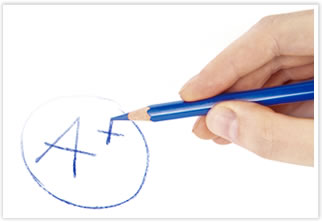Subject name |
Final Project |
| Study | International Master in Business Administration (IMBA) |
| ECTS | 6 |
| Four-month period | Third four-month period |
| Type of subject | Compulsory |
Presentation
During the last part of the IMBA program each student will have to complete a Final Project, namely: the Master's Thesis (MT). This MT will consist on the preparation and defense of a Business Plan. Thus, it will encompass a written report as well as the slides to be used as support of the oral presentation. This project is developed individually under the advice and guidance of Professor-Tutor for preparation. The oral defense will happen in front of a three-member Board.
A thorough Business Plan which includes a Feasibility Analysis is a key business tool that helps establish the difference between an occurrence and a reasonable business idea. The use of the set of tools learnt during the Program will help systematize the process that needs to follow in order to bring an abstract idea into a feasible business plan with a strong financial justification. Thus, two essential objectives of the IMBA Master’s Thesis are to develop the student’s capabilities for in-depth analysis and decision making.
Competences
This project has an important educational justification as it develops of a number of skills:
General competences
- GC1. To control and to integrate the techniques, instruments and methods of management needed in the development of the professional activity.
- GC2. To delve into the business management and into the different administration areas.
- GC3. Recognize and evaluate the impact of relevant variables to achieve the organizational objectives in business management.
- GC4. That the students can communicate their conclusions, present their projects, results, plans, the knowledge and the reasons that support them before a specialized or an ordinary public in a clear and in an ambiguity free manner.
- GC5. That the students are able to integrate their knowledge in the different working areas of the business with information, usually incomplete or limited, in the business environment in order to manage the decision making and troubleshooting processes through complex and multidisciplinary situations.
Specific competences
- SC12. To understand the functional organization of the business. Areas interrelation. To identify and to understand the factors and dimensions that belongs to the functional part of the business, and the features of its administration system.
- SC18. To be able to search and structure the information from different sources, to interpret the results obtained and to elaborate commercial reports and marketing plans.SC29. Bring rationality and ethical and social responsibility commitment to business management. Understand the concept of corporate social responsibility.
Transversal competences
- TC6. To communicate efficiently, in a structured and organized manner, the most relevant aspects of a project.
- TC8. To ease the process of transition to the business professional career.
- TC9. To provide the students with learning skills that will allow them to continue their studies in an autonomous manner.
MT Structure

The IMBA MT may vary in size and structure depending on the area of knowledge, the matter at hand, or techniques applied. However, each work needs to conform to a set of minimum standards and common contents.
The MTs should have an extension between 40 pages (excluding annexes) and 60 pages (including annexes), and they shall comply with the following requirements:
- Cover: conform to the model provided by UNIR
- Summary: a brief summary (max. 150 words) shall be included. This summary will provide information to attract investors and gather support for the project by stating the essence of the project, its economic magnitudes, and the returns expected.
- Key words: a line of key words (max. 5) will be included. These words will represent the business area object of the work, as well as the work’s theme.
- Index: the work must have a properly paginated index.
- References: the student must use the APA norms to cite all used sources (books, articles, etc.).
- Page format: the work shall be written in A4 format, printed on one side of the paper, and keep the following margins: Left: 35mm., Right: 15mm., Top & Bottom: 25mm.
- Font: Arial 11 points.
- Titles, sections and subsections: Arial and a maximum of 18 points.
- Line spacing: 1.5.
- Pages must be numbered and should include the student's name and degree to be obtained.
Although the MT varies in content and there are no fixed rules, there are common guidelines to estructure the content:
- Introduction: description of the project and justification of the business plan proposed by the student including the key objectives.
- External and internal analysis: use of the learnt tools to analyze the overall environment of the project that is being proposed.
- Marketing Plan: analysis of the key marketing objectives and description of the strategies that shall be developed to achieve these objectives.
- Operations Plan: description of the production phases if a product needs to be manufactured or the processes if a service is under study.
- Human Resources: consideration of the key elements related to Human Resources aspects and the needed organizational structure for the given business plan.
- Financial Plan: financial analysis and economic feasibility of the proposal (pro-forma statements, valuation, use of ratios, etc. as needed).
- Conclusions: presentation of the conclusions derived from the above analysis to assess the economic viability of the proposed project and recommendations.
- Limitations, main threats, and opportunities: limitations, risks and threats found and contingency plans.
- References: all citations included in the final project must be included in the references section. Therefore, the use of any sources has to be referenced in this project. References and citations must follow the APA style. To obtain further information on this please see “Master’s Final Project development” in the virtual campus.
Defense
To defend the MT the student must have fulfilled in advance the following requirements:
- The student must have previously enrolled in the course: Master's Thesis.
- The date of the oral defense will be between 30 and 90 days from the date of delivery of the MT, once it is considered that the work is suitable for its defense.
- Both the MT memory as well as the file attachments must be submitted by the deposit (submission activity) of these in the section Activities on the date specified in each call.
- The authorization of the MT director is mandatory if planning to use unconventional software.
The oral defense of the MT by the student will happen in front of a Board through the oral presentation of the work’s key aspects and within the maximum time allotted for this purpose.
The student will have a maximum of thirty (30) minutes to present the key elements of the work. The presentation will be supported by the use of power point or equivalent slides. Penalties will be given should the student not remain within the allotted time.
After the presentation the student will answer questions raised by the Board, which will have a maximum of fifteen (15) minutes for questions and clarifications.

Evaluation and grades
Criteria for the evaluation
The evaluation of the MT is done according to three aspects:
- Organization (20% of the grade): refers to the structure and organization of the MT.
- Presentation (30% of the grade): values clarity in the oral presentation of the Thesis and the written report including the capacity for synthesis, analysis and response to questions.
- Content (50% of the grade): evaluates the technical aspects of the work (the correct use of tools, estimations, and so on).
| Evaluation system | Min |
Max |
| Organization | 0 |
20 |
| Presentation | 0 |
30 |
| Content | 0 |
50 |
TOTAL |
0 |
100 |
The three-member Board chosen to assess the Defense of the MT will be selected by the Director of the IMBA considering that two of the members will be UNIR faculty, while the third one shall be a full-professor from outside the IMBA program.
The deliberation to assign each grade will happen behind closed doors once each presentation is finished. The final grade will be the result of the consensus reached by the 3-member Board.
The final grade assigned to the MT will be given based on a numerical scale from 0 to 10 with one decimal. This grade should be added to the corresponding qualitative rating.
| 0 – 4, 9 | (D) |
| 5,0 – 6,9 | (C) |
| 7,0 – 8,9 | (B) |
| 9,0 – 10 | (A) |
If honors are to be given, these should be noted with an A+.